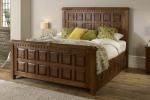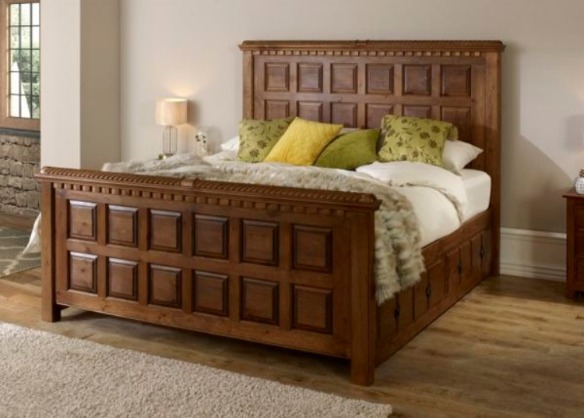Bedstead Plans With Drawers Underneath - How to Find the Perfect Model Building Blueprints For Your Charming Assembly


Amaze your neighbors and friends with your creativity. Using old scraps was challenging on some levels due to warped boards. Unlike the basic cabinet above, face frame for this cabinet must fit flush to the cabinet sides to accommodate concealed hinges we're using. Make sure you take a look over the rest of related projects to see alternatives and more projects for your workshop, as well as for your backyard. If you need longer lengths, overlap the siding a few feet (https://woodcraftdiagrams.com/four-poster-bed-plans-blueprints) and screw the pieces together to ensure a smooth curve. For future reference, mark water level with a permanent marker.
Remember to wear safety glasses, earplugs and a dust mask. The self-watering planter boxes themselves were gorgeous, they kept rabbits and other critters from munching on greens, and we went for weeks on end without having to water. Go ahead and pull the bed frame down and swing the leg supports to floor. Rout the rabbet for the case back in the bottom frame. Glue and nail plywood top to the top of the stand, then apply cove molding to neaten up and hide edges. Thread rope through mattress handles. Apply a finish to match your cabinets, then center and screw the lazy Susan bearing under large disc and play spin bottle.
This makes the most sense for this project because you could hide bad side. Screw the bench pieces together from the back to keep fasteners hidden. Instead of scratching away at the wood fibers, the belt would rip them out. If you have clamps, (find this) use them to squeeze closed any gaps. A few days after casting the top, you'll spend a couple of hours removing the form, chipping the edges and applying a sealer. Note position of mounting holes. If fit is too tight, move the fence closer to blade. Go around twice to make sure the edge is crisp.
It lets you convert your garage into a workshop quickly and rolls up against the wall to restore parking space. Glue in the dowels to join discs, and glue in handle. Before you squeeze switch to restart cut, make sure saw blade is perfectly aligned in the kerf and maintain a firm grip in case the blade catches and jerks saw. Choose hinges with wide flanges so the screws will go through the trim and enter the trimmer stud behind. If you choose cabinets made from other woods, you'll have to hunt for matching materials. You have to do two things if you choose this method.
Now you could use box as a pattern for cutting out and joining face-frame parts. If you try to glue the edging on perfectly flush, a small section inevitably ends up lower than surface of the plywood, which is a disaster. The louvered door is made from one of a pair of closet bifold doors, which you could buy at almost any home center. To mount faces, first clamp them to boxes in their desired position. Learn how to build one for your shop here. This illustration shows dimensions and the assembly of the shelf unit. Pull any protruding staples with a hammer to prevent punctures.
Space the boards with a carpenter's pencil. Divide your slats into good and better, and use the better ones on the back, where they're more visible. Either a sharp steel scraper or, better yet, a carbide paint scraper will pop off all those glue beads in a heartbeat. Drive screws through cabinet backs into studs. Sanding after each coat rubs out imperfections and roughens surface for better adhesion of the next coat. In order to get job done properly, you should follow step by step instructions and take accurate measurements. Slotted blocks work well to hold round pipe clamps, too, as long as you cut extra-snug slots.
Use carpenter's glue and clamps to assemble the legs. Lift blade guard with your thumb and sight down one edge of the blade to align your cut. Screeding is hard work and it's best to have a helper. The tape also helps you keep track of orientation of the slots. Use a straightedge clamped to the workpiece as a guide for a perfectly even cut. To prevent gouges, use clean, new belts, avoid grits finer than 120, and keep the plate under the belt clean and free of dust buildup. You could store a wet brush for a few days in water and then wash and use it over and over again.
To craft a straight edge on any board, all you have to do is mount the crooked board to a larger carriage board and run the whole assembly across your table saw. For easier cleanup, toss a coarse sanding sponge into your water bucket. Self-centering bits drill a centered pilot hole resulting in perfectly centered screws.